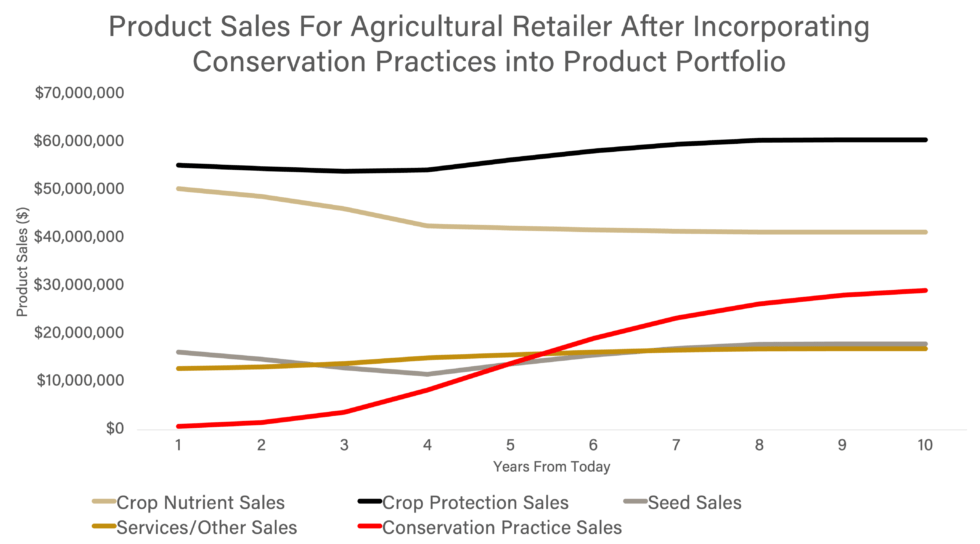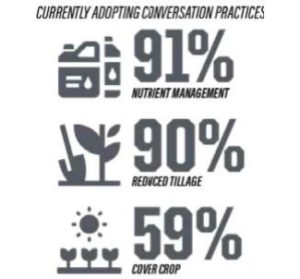CONSERVATION Business Solutions
EMPOWERING AGRICULTURAL RETAILERS: CONSERVATION PROFITABILITY TOOL
The center’s research team, in partnership with The Nature Conservancy (TNC), has developed a conservation business development tool for agricultural retailers to better analyze how offering conservation practices to farmers affects their business profitability. The tool is tailored for CEOs, CFOs, and agronomists and uses a Monte Carlo simulation – a technique for assessing the likelihood of various outcomes – to project financial scenarios.
Background
This project, conducted in three phases, aims to empower agricultural retailers to evaluate how the adoption of conservation practices impacts their profitability. Overall objectives for each phase include:
- Assessing opportunities and challenges in farmers’ and agricultural retailers’ conservation practice planning and adoption.
- Examining agricultural retailers’ role in fostering farmers’ adoption of conservation practices.
- Exploring a sustainability services business model tool that enhances agricultural retailers’ competitiveness and supports farmers’ conservation needs.
Phase One: Understanding Perspectives
During this phase, we organized ten focus groups between December 2019 and June 2020. Five groups featured retailers from the Midwest, while the other five involved their farmer customers. We asked participants for their perspectives on different aspects of conservation practices, adoption challenges, the role of retailers and business opportunities. We compared and summarized their opinions to understand the varying perspectives between the two groups.
View the white paper for in-depth details and findings of this research study.
Phase Two: Exploring Survey Data
The research team used findings to develop questions for the 2021 Large Commercial Producer Survey, which goes to both farmers and retailers. The objective of the survey was to measure their perceptions of identified key themes from Phase One. The graphics below show survey results on the top three adopted conservation practices and reasons for adoption or non-adoption in 2021.
Phase Three – Analyzing Business Models
The research team created a spreadsheet model to analyze the financial benefit of agricultural retailer business models that help scale the adoption of on-farm conservation practices. The tool helps users to:
- Establish a baseline financial model for a typical ag retailer.
- Explore alternative business models incorporating conservation practices under various demand scenarios.
- Compare the financial implications of the two models, focusing on the transition period for existing retailers adopting the enhanced conservation business model.
Key Features
Financial Impact Analysis: Understand how offering conservation-related products and services affects revenue, cash flow, and profit and loss (P&L).
User Personas: Designed for CEOs, CFOs, and agronomists in agricultural retail to develop and manage strategies.
Data Source: Relies on retailer-provided data, ensuring accurate outcomes reflecting business and industry insights.
Sensitivity Analysis: Identify influential variables to refine strategies and maximize benefits.

How to Use the Tool
To start the process and access the tool, contact us via the link below. You’ll complete a survey to gather necessary information. We’ll then use the data to create tailored scenarios, and you’ll have the opportunity to explore results with Purdue experts for deeper insights.


